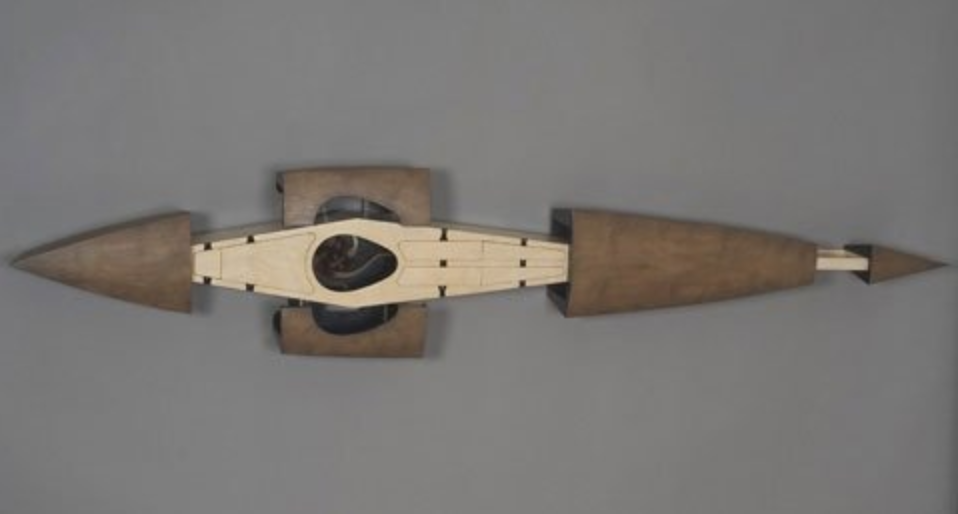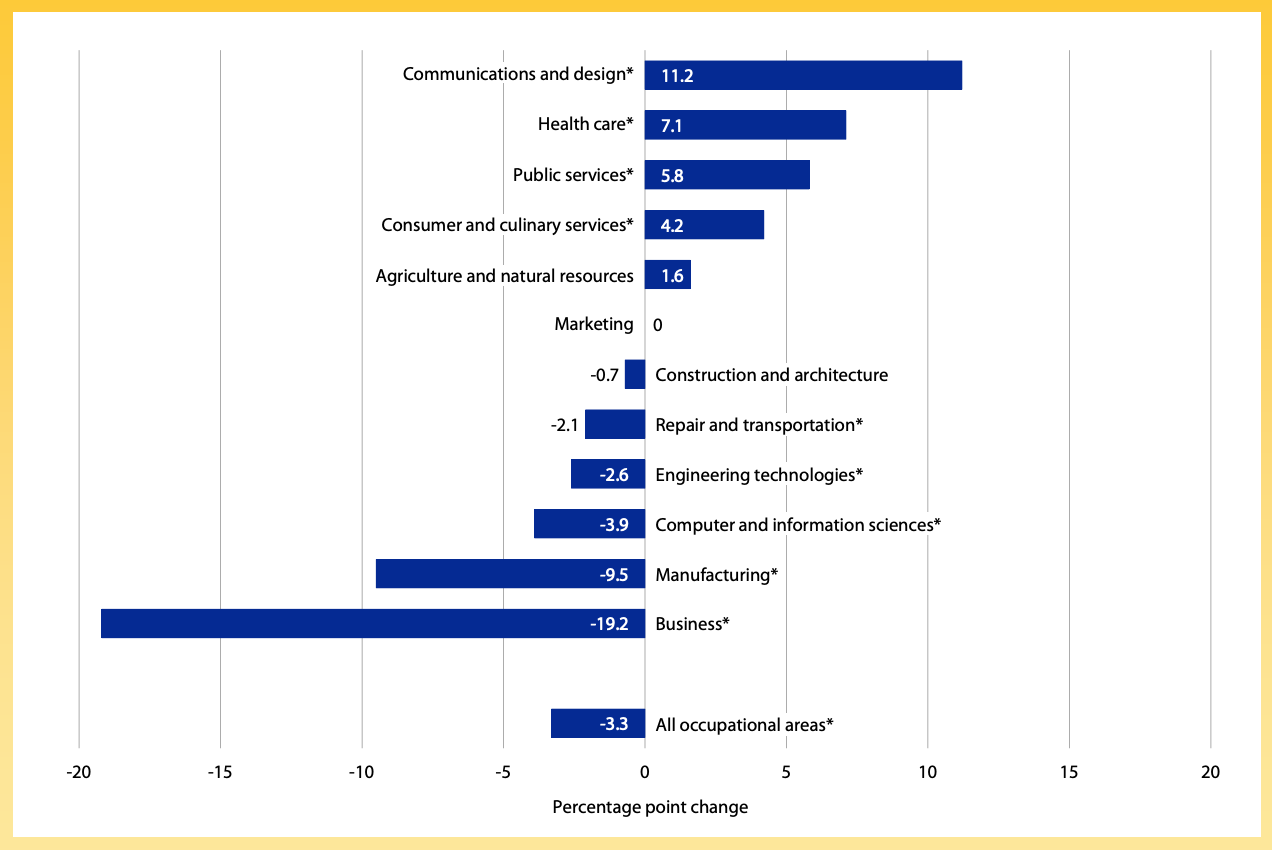Vocational Education in America
CategoriesI left university after one year and spent the next six bartending while I figured out what direction to take in life. At one point I worked at this steakhosue in Portland and made a friend who was exceptionally artistic in a hands-on kind of way. He was working on a degree at the Oregon College of Art & Craft. Obviously a liberal college, OCAC provided the minimum of core academic classes like calculus and lit and concentrated primarily on material trades. Their four-year degree program cycled through seven media - metals, woods, ceramics, textiles, etc. I was envious of my friend Adam for having discovered such a college because after twelve years of traditional schooling funneling into university I had been utterly deflated at the prospect on arrival, and I would've thrived in a program like his at OCAC. Since graduating Adam has been building exceptionally beautiful decorative and functional art - boats, furniture, displays and structures.

I grew up in the shop making stuff with my family - birdhouses, stained glass, fences, outbuildings, cars. While I was learning math and English at school I was learning to make stuff with my hands at home. There were Career & Technical classes at my high school, I think, but no one I knew took them and we weren't ever asked if we might have interest. Those courses had an "alternative" brand, as if they were a secondary option for those who didn't make it in the primary subjects (I think this reputation is a huge hurdle for CTE).
OCAC closed last year after 112 years, having their final commencement in May. From the Board of Trustees:
"The path to closure was paved with years of restructuring, none of which could sufficiently eradicate the rising costs of running a private arts college in the 21st century. Since the most recent financial recession, it has been difficult to sustain our high level of academic programming in the arts and, unfortunately, we are not alone in this struggle."
It simply costs a lot more to teach hands-on skills than it does to teach curriculum out of a text book. This is why CTE programs become rarer - it's difficult to budget more per student for these programs, as mentioned in last September's feature on Steve Schank. But it seems like we've come to terms with the necessity for a skilled workmanship beginning in middle and high school and momentum is shifting back toward the center between vocational and acedemic curricula.
So for those of us not fighting to protect a CTE program, I wondered:
- What does CTE encompass?
- What is the status of vocational education?
- What kind of CTE programs are evolving and how are they changing?
- Beyond public wisdom, what does the data tell us about CTE in America?
What does CTE encompass?
I know what the acronym stands for but which subjects fall under its umbrella? National Center for Education Statistics categorizes CTE into:
- Communications and Design
- Health Care
- Public Services
- Consumer and Culinary Services
- Agriculture and Natural Resources
- Marketing
- Construction and Architecture
- Repair and Transportation
- Engineering Technologies
- Computer and Information Sciences
- Manufacturing
- Business
What is the status of vocational education?
Since the publishing of A Nation at Risk in 1983, focus on and funding for high school education has shifted to academic subjects and consequently away from vocational training subjects. From 1990 to 2009 the number of vocational credits earned by high school graduates dropped 14%, or two-thirds of a year of vocational education, which coincides with a 32% drop in federal funding from the Perkins Act since 1985 (the largest funding source for vocational programs) (Hudson, 2013).
Again from Hudson, the following chart respresents change in CTE courses taken between 1990 and 2009 by percentage:

Overall a decrease of 3.3% in all occupational areas, but I am more surprised that Computer sciences decreased and agriculture increased. I'd have thought the opposite. Released in 2013, these are the most recent statistical analyses avilable at NCES CTE Statistics.
So funding has decreased as has CTE course-taking in some subjects but it increased in others. I think it's important to learn, or at least try, to make things with your hands and your mind. But with the evolution of artificial intelligence comes a diminished reliance on manual labor to achieve the same output, so perhaps a decrease in CTE focus is acceptable, so long as we never lose the skill sets. I think we can accept a reduction in CTE students so long as those students maximize depth of learning for their individual focus areas.
What kind of CTE programs are evolving and how are they changing?
I've had opportunity to learn about changes in education departing away from the committee-of-ten model toward student-centered learning. Does a comparable trend exist specific to vocational education programs?
STEM - I think we all know this one by now. Is the program and its focus effective?
The National Assessment of Educational Progress (NAEP) Technology and Engineering Literacy (TEL) assessment measures whether students are able to apply technology and engineering skills to real-life situations. TEL uses interactive scenario-based tasks to gauge what students know and can do. The most recent TEL assessment was given in 2018 to approximately 15,400 students in grade 8. Reults indicate that, as compared to 2014 reults, TEL scores and TEL participation increased. (https://nces.ed.gov/nationsreportcard/tel/)
According to this U.S. News article, average math and science scores improved between 2000 and 2013, high school graduation rates increased along with STEM-related college program entry, particularly for women. It suggests that focus on STEM has been a positive start but requires further improvement, particularly relating to stricter standards.
Industry Partnerships - Success is evident in partnerships between industry employers and CTE programs to offer internships, guest speaking engagements, job shadowing, mentoring or career day participation. This article from ACTE online outlines options for industry-education partnerships resulting in recruitement of more qualified employees.

Hybrid Learning - While this paper highlights an adult-education program for small-scale sustainable farm design, the combination of online learning and practical experimentation in CTE fields of study creates a modern teaching model with endless possibilities.
Consensus: a departure from vocational to academic curriculum did occur beginning in 1983 but refocus on CTE has been successful and career-readiness courses will not be left behind as learning becomes student-centered and hybridizes online.
Beyond public wisdom what does the data tell us about the influence of CTE?
Vocational and CTE in American High Schools: the Value of Depth over Breadth
Kreisman and Stange find that:
Students positively sort into vocational courses - this suggests that vocational tracks are not a secondary option after academic failure but instead an attractive option to many students.
Upper-level vocational training results in average 2% wage premium while Introductory-level vocational training offers no wage gain - This indicates that early selection of and long-term commitment to vocational training results in occupationally relevant work force earning higher wages. This should be the goal.
These results suggest (a) policies limiting students' abilities to take vocational courses may not be welfare enhancing, and (b) the benefits of vocational coursework accrue to those who focus on depth over breadth (Kreisman & Strange, 2017).
Conclusion(s)
From 1983 to the mid-2000s concentration on academic "college-prep" curriculum pulled enrollment and funding away from vocational training, but recently a redicrection to CTE has been effective. New programs and adaptation of technology continues to augment career-readiness education. Focus on "depth over breadth" indicates best results.
These days I'm not a vocational professional so I develop my manual skills through art in the workshop. Had I paid attention to CTE opportunities I might have followed my friend Adam into a trade field. But I'm thrilled to realize that we (USA) did not commit the insane error of neglecting the importance of vocational training, and it's really exciting (as always) to see the evolution of Career & Technical education.
Here are a few classes related to this topic:
 Teaching Algebra with Technology
Teaching Algebra with Technology
 21st-Century Learners: Reaching and Teaching the iGeneration
21st-Century Learners: Reaching and Teaching the iGeneration
 Student-Centered Classrooms: A Constructivist Approach
Student-Centered Classrooms: A Constructivist Approach